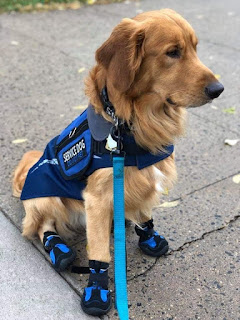Introduction:
Welcome to Pawsitive Training Tales, your go-to resource for all matters pertaining to animal behavior and training. Whether you have a rambunctious puppy, an inquisitive kitten, or a cherished pet with behavioral issues, we're here to offer you insightful information, doable advice, and inspiring tales to help you forge a deep bond with your four-legged friends.
At Pawsitive training tales, we firmly believe that the best in our pets can be brought out by using gentle training techniques and positive reinforcement. Our group of knowledgeable pet trainers and behaviorists is committed to guiding you through the fascinating world of pet training with tolerance, compassion, and a whole lot of love.
Come along with me as we set out on this fruitful adventure together, sharing our wisdom, our triumphs, and perhaps some cute pet videos. Pawsitive Training Tales is intended to inspire, educate, and celebrate the joy of training our furry friends, whether you're a novice pet owner or a seasoned enthusiast.
Every paw is different, and every training session offers the chance to get better. So let's wag our tails and begin this amazing journey of training well-mannered, content dogs.
Reward base training:
Use snacks, kudos, and prizes in reward-based training to reinforce desired actions. Rewarding your pet for desired behavior makes them more likely to repeat it in the future.
Use snacks, kudos, and prizes in reward-based training to reinforce desired actions. Rewarding your pet for desired behavior makes them more likely to repeat it in the future.
Clicker training:
When your pet exhibits the required behavior, a clicker is used to generate a distinct sound, followed by a reward. The clicker acts as a marker to show that the desired behavior was displayed.
Operation conditioning
Operant conditioning is a strategy that links a behavior to its outcome. Encourage positive conduct by rewarding it, and deter negative behavior by ignoring it or rerouting it.
Consistency:
Keep your instructions, cues, and expectations constant. Animals benefit from routine and straightforward communication. For certain directives, always use the same language or body language.
Break it down:
Divide difficult behaviors into more manageable chunks. Reward each step your pet takes toward the desired behavior as you train them. This procedure is referred to as "shaping."
Timing:
Timing: In training, timing is essential. To reinforce the link between the behavior and the reward, give rewards right away after the desired behavior happens.
Persistence and patience:
Persistence and patience are necessary for training. Be tenacious, reliable, and upbeat in your approach. Avoid using punishment-based methods since they might make pets fearful or aggressive.
Socialization:
Expose your pet to a variety of settings, people, and other animals from a young age to encourage socialization and lessen fear or hostility. As a result, they develop into sociable, assured animals.
Professional guidance:
A professional dog trainer or animal behaviorist may be able to help you if you're having trouble training your pet or dealing with particular behavioral concerns. They can offer tailored advice and assistance.
Note better
Keep in mind that establishing a solid bond with your pet is crucial. Training with positive reinforcement not only aids in modifying their behavior but also improves the bond between you and your pet. Have fun and enjoy the training process with your pet!











0 Comments